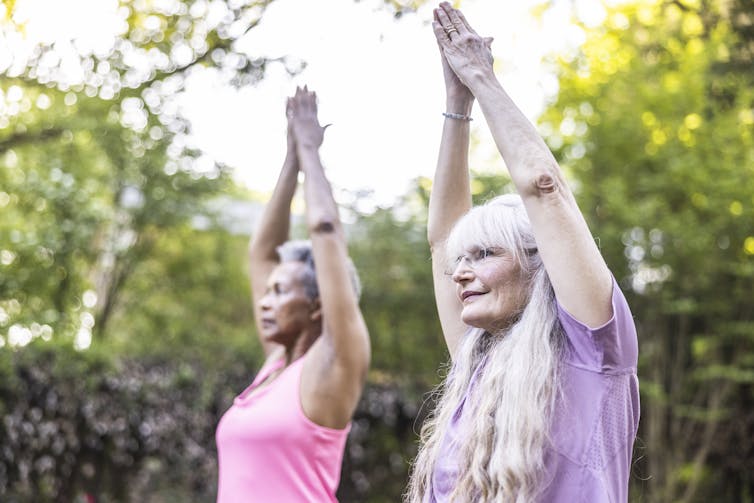
By 2050, approximately a quarter of the UK population is expected to be over the age of 65. With this in mind, the World Health Organization (WHO) has put “healthy ageing” on its agenda. This means finding ways to maintain health, wellbeing and functional ability in order to have a good quality of life and enjoy the later years.
Everyone ages at a different rate – but there are some things that can influence how well we age, such as by making changes to the types of activity we do and the foods we eat.
Older adults are generally less physically active than they were when they were younger and because of this, their energy intake requirement may decrease. However, there is a difference between energy requirements and nutrient requirements, and nutrient requirements actually remain the same, if not increase, as we get older.
This means we need to get more nutrients into less energy which can be tricky as older adults often have lower appetites. This is why scientists suggest that it may be necessary to enrich the food of older people to maintain the nutrient intake.
Several studies have shown that undernutrition affects one in ten older people living independently at home. However, it affects five in ten older people living in nursing homes, and seven in ten older people in hospital.
Being overweight, even obese, does not protect against undernutrition. And when older adults lose weight, they lose muscle, meaning that they are more likely to lose their abilities to do daily tasks.
Weight loss in older adults is a key sign of malnutrition that needs to be addressed – but it can be easily missed, especially when many older adults associate the idea of thinness with good health. But clothing that’s too loose or a watchstrap that floats on the wrist are all warning signs of undernourishment.
Similarly, if someone you care for has started to say things like, “Oh, I don’t want much food today, I’m not hungry”, “I’m not hungry, it’s natural, I’m getting older”, or “I’d rather just have a biscuit to be honest,” then these could be warning signs. An effective way to keep on top of this is regular weighing at least once per month which enables a quick response to potential indicators of malnutrition.
If people are eating small amounts of food, it is important to think about how to add more nutrients into it. A very effective technique, “fortification” is commonly done with pre-made products such as breakfast cereals, plant-based milk and bread in the UK.
Fortification (adding foods, ingredients or nutrients into to existing foods or meals) is easy to do at home as well and can provide a flexible approach for older adults as it allows them to continue eating the foods that they most enjoy.
For older adults in particular, protein is a very important nutrient, because of muscle loss (sarcopenia) which is a natural part of ageing. This could be slowed down or even reversed by eating enough protein at regular intervals throughout the day. A few ways to increase protein include:
• Adding dairy ingredients such as milk, high-protein yoghurt, Quark (soft cheese), milk powders, eggs and cheese into meals – even into simple foods like mashed potato.
• Nuts are a great source of protein, try adding ground almonds to savoury or sweet meals (beware of nut allergies).
• Soy protein can be a convenient and cost-effective option, either for vegetarians or to further fortify minced-meat meals.
• Look in the sports section of supermarkets to find whey protein powders. These are marketed to gym enthusiasts, but actually whey is one of the best proteins to stimulate muscle growth. This versatile ingredient can be mixed into porridge before cooking or used it as a substitute for other powdered ingredients in baking.
Physical activity and nutrition go hand-in-hand – both are equally important. As we age, being physically active becomes even more essential as it helps to prevent disease, maintains independence, decreases risk of falls, improves cognitive function, mental health and sleep.

Exercise can also combat isolation and loneliness which has also been linked to decreased appetite in older adults. Often strength training gets ignored when we think of being active but to keep independence and prevent falls, older adults should do varied physical activity that emphasises balance and strength training at moderate or greater intensity on three or more days a week.
Ultimately, it’s essential to contact a doctor or dietician with any worries or concerns about malnutrition or unintentional weight loss. There are, however, some excellent resources to learn more about ageing healthily and maintaining a good quality of life in later years.
Miriam Clegg, Senior Lecturer in Human Nutrition, University College Cork and Rachel Smith, Sensory and Consumer Scientist, University of Reading
This article is republished from The Conversation under a Creative Commons license. Read the original article.